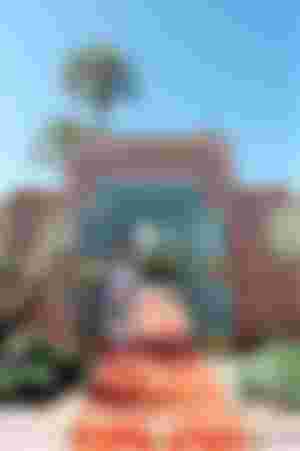welcome to marrakech

Marrakech, often called Marrakesh, is the capital of Morocco's central region. It is located in the center of the rich, irrigated Haouz Plain, south of the Tennsift River, and is the first of Morocco's four imperial cities. The medina, or ancient part of the city, was designated a UNESCO World Heritage site in 1985.
The kingdom of Marrakech was named after it, and it was the capital for a long time. It was constructed in the mid-11th century by the Almoravid dynasty's Ysuf ibn Tshufn, and it served as the Almoravid capital until 1147, when it fell to the Almohads. The Marnids took possession of Marrakech in 1269, preferring the northern city of Fès as their capital. Although Marrakech thrived as the capital under the Sads in the 16th century, subsequent Alawite rulers preferred to live in Fès or Meknès; however, the Alawites continued to use Marrakech as a military base.In 1912, the Islamic leader Amad al-bah conquered Marrakech, but was defeated and driven out by French forces led by Col. Charles M.E. Mangin. Marrakech was ruled by the Glaoui family for many years during the French protectorate (1912–56), the last of whom, Thami al-Glaoui, was the main instigator of Muammad V's deposition in 1953.
The medina in Marrakech, which is surrounded by a large palm grove, is known as the "red city" because of its beaten clay buildings and ramparts, which were built during the Almohads' reign. Jamaa el-Fna plaza, a bustling marketplace, is the medina's beating heart. The Kutubiyyah (Koutoubia) Mosque, erected by Spanish captives in the 12th century, stands nearby, with its 253-foot (77-meter) minaret.The city's historical growth is shown in the 16th-century Sad Mausoleum, the 18th-century Dar el-Beda Palace (now a hospital), and the 19th-century Bahia royal house. Much of the medina is still encircled by 12th-century walls, with the stone Bab Agnaou standing out among the surviving gates. The current area to the west of the medina, known as Gueliz, grew up during the French administration.
The Menara olive grove and the walled 1,000-acre (405-hectare) Agdal gardens are two of Marrakech's most famous parks. The city's gardens are still watered by an irrigation system created under the Almoravids. The city is a commercial center for the High Atlas mountains and Saharan trade, and it has an international airport. It is popular for tourism and winter sports. It is connected to Saf and Casablanca by rail and road.
